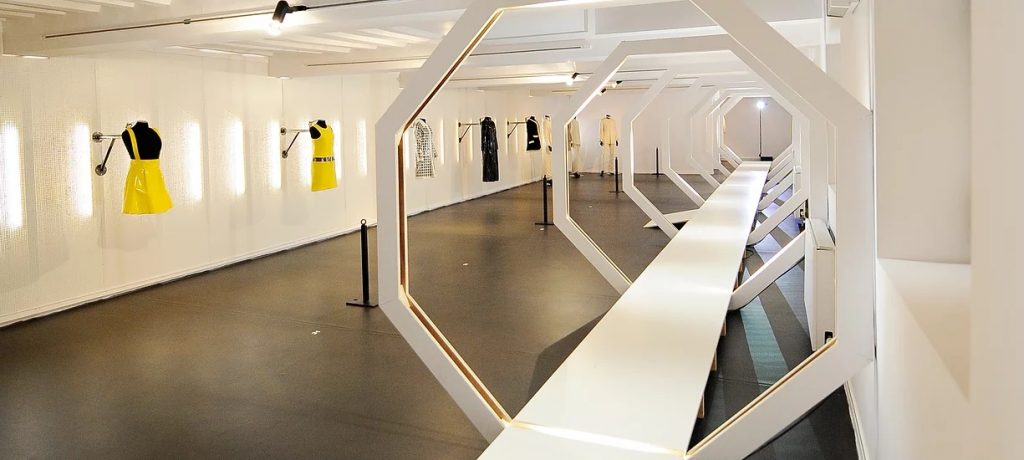Alter Nature: The Future that Never Was
From the 29th of January 2011 until the 5th of June 2011 the Fashion Museum of Hasselt (MMH) showed visions of the future from the past, and the possible future of tomorrow.
The Future That Never Was presented a ‘futuristic’ view on the magical year 2000 from designers from the sixties and showed you a glance of new possibilities of tomorrow.
Throughout fashion history there has always been a strong connection between fashion and scientific, industrial innovations. Fashion designers have always used new technologies in their designs and the possible image of the future also springs from the new sciences and innovations. Modern discoveries and progress are often directly reflected in their designs and collections.
In the sixties a new generation of these ‘modern’ designers rises. Pierre Cardin, Andre Courrèges, Rudi Gernreich and Paco Rabanne amongst others experimented with new forms and (synthetic) materials. These designers often represent an era in which fashion does not find inspiration in the past, but eagerly looks at the future.
“The clothes that I prefer are those I invent for a life that does not exist yet – the world of tomorrow”; Cardin once said. This resulted in dynamic new designs and styles that are still a source of inspiration for many (young) designers today.
The impact of the industrial revolution on textiles and confection was rather slow in comparison to the changes that were about to happen in the next 50 years. New technological developments and innovations promise to turn the fashion world upside down again. The evolutions in bioscience and technology encourage the creation of new textiles, clothing and functions, always with an eye on aesthetics. One of the most important aspects of this ‘eco-fashion’ is that it foresees future possibilities and applications in fashion.
Besides this, social, cultural and environmental aspects – for example durability and honest production processes – are gaining importance. On a long term, the fashion world will have to adapt to this.
High end fashion is finding more and more difficulties to distinguish itself on a continuing competing market. The demands of the consumer rise, while the budget for fashion gets smaller.
The Future That Never Was placed these new possibilities next to the vision of the future of prominent designers from the Space Age period. A period that changed fashion forever.
Curator: Kenneth Ramaekers
Assistant Curator: Eve Demoen
Research: Romy Cockx & Lise Braekers
Scenography: Lien Wauters
Graphical design: Brusatto
Participants: Victoria & Albert Museum London (Paco Rabanne, Pierre Cardin, Oliver Goldsmith) (UK), Museo del Traje (Paco Rabanne) (ES), Gemeentemuseum The Hague (Gijs Bakker, Emanuel Ungaro, Paco Rabanne, …) ( NL), Hasselt Fashion Museum (André Courreges, Mary Quant, Paco Rabanne, Pierre Cardin, Rudi Gernreich, …) (BE), Lisa Shahno (DE), Suzi Webster (CA), Alexandra Verschueren (BE), Anke Loh ( BE), LucyandBart (NL), Wieteke Opmeer (NL), Anita Evenepoel (BE), Anna Heylen (BE), NatureVSFuture (US), Olivia Ong (US), Atalanta Weller (UK), KnoWear (US), Marloes ten Bhömer (UK), BioJewellery (UK), Christopher Raeburn (UK), ADO Clothing (US), Suzy Webster (UK), Katharine Hamnett (UK), Lanvin (FR), Thierry Mugler (FR), …
With thanks to: City of Hasselt, Municipal Executive, vzw De Vrienden van het Modemuseum, Employees of the Modemuseum Hasselt, Employees of the Central Workplaces of the City of Hasselt, Volunteers of the vzw De Friends of the Fashion Museum
Image courtesy of Modemuseum, Hasselt, Belgium
